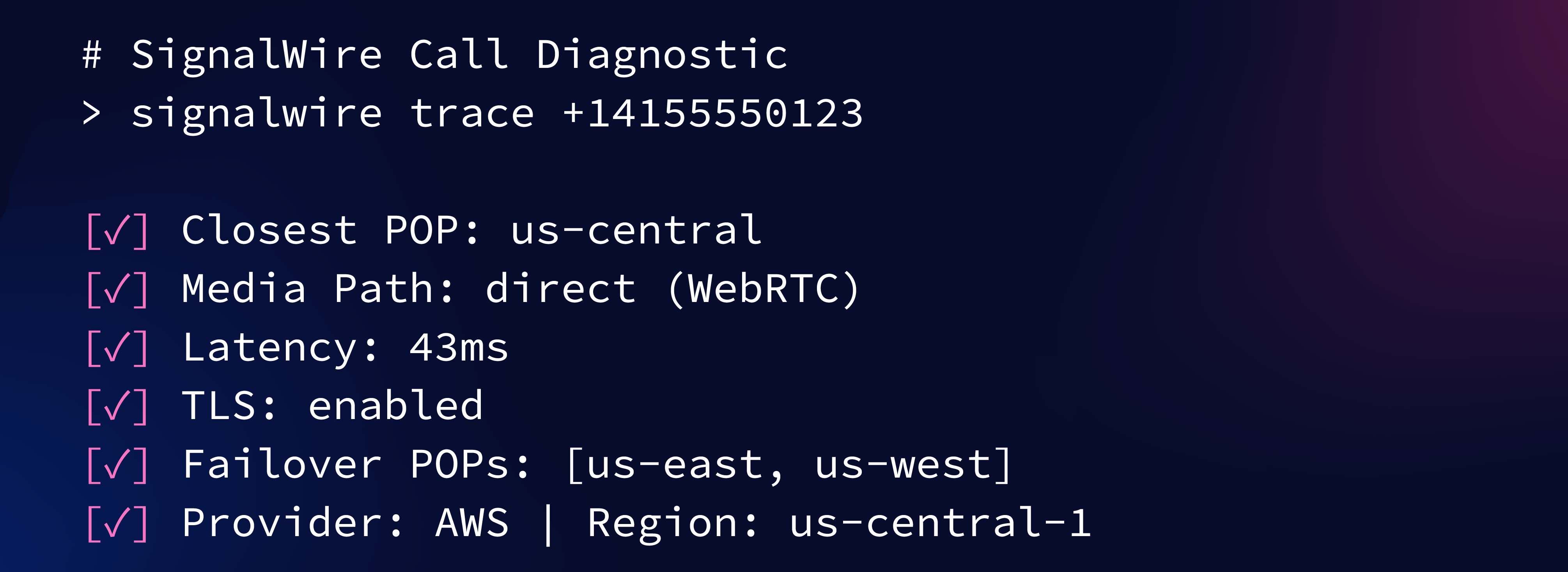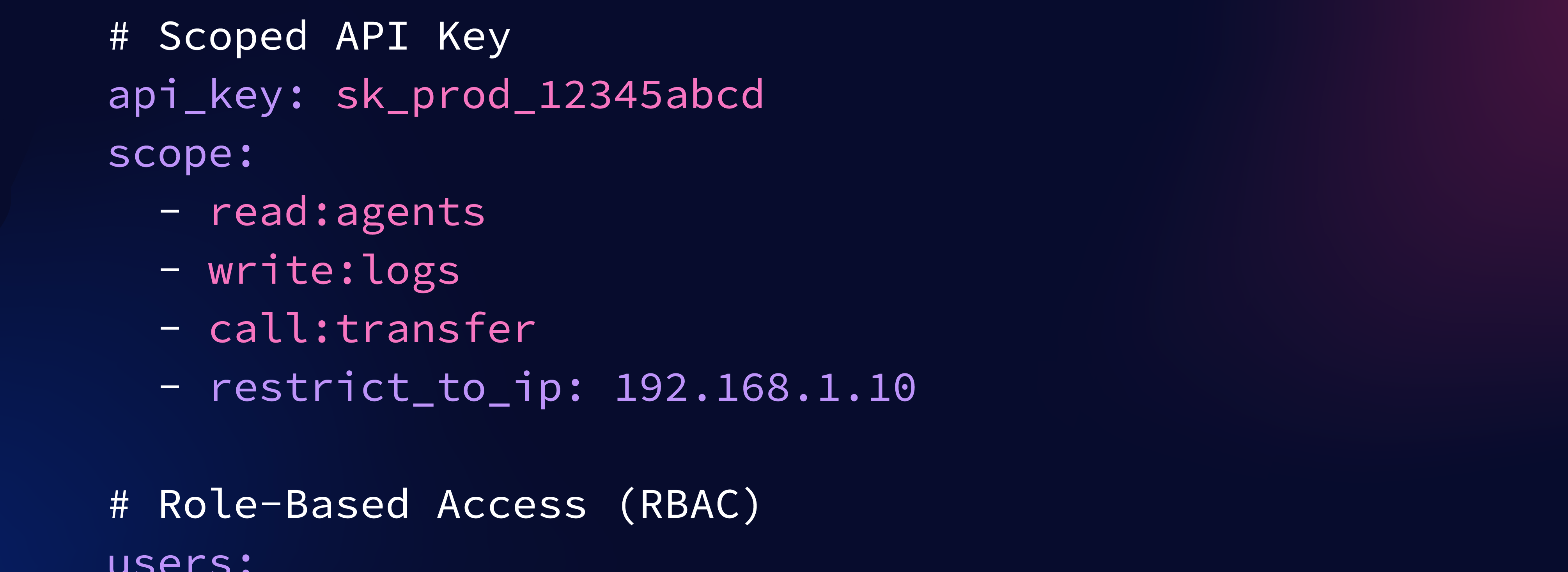AI Agent API
Build and deploy voice AI agents with full control over logic, media, and telecom.
All fields are required
Build and deploy voice AI agents with full control over logic, media, and telecom.






Why SignalWire?
Resolve customer issues end-to-end with a digital employee adept at handling common problems, personalizing follow-ups, generating tickets, and launching surveys—minimizing wait times and freeing your team to tackle more complex challenges.

Architect AI agents directly within the media and signaling layers. No external detours. Native integration ensures sub-second round trips.
Use the OSS Agents SDK to run real-time Python-based voice agents. Trigger API calls mid-session, route by intent, and respond with live data. Run everything from a single Python service.
Control PSTN, SIP, WebRTC, and SMS via programmable APIs. Define how communications work without carrier lock-in or glue code.
Run agents locally, in containers, or serverlessly. Scale seamlessly without rewriting. Sub-500ms latency, high call quality, and built-in failover.
Build interactive voice response systems that use speech recognition and natural language understanding instead of rigid DTMF menus. Route calls dynamically based on intent, user profile, or external API lookups, all with sub-500ms latency.
Deploy conversational AI agents that can answer questions, execute workflows, and escalate to humans when needed. Combine real-time transcription, LLM-based reasoning, and API integrations for production-grade support automation.
Create intelligent call routing that evaluates caller context, history, and external data sources to forward calls to the appropriate agent, queue, or external system. Adjust routing logic mid-call based on AI-detected intent.
Integrate AI into your contact center to handle high volumes of voice, video, and messaging interactions. Use embedded speech-to-text, translation, and LLM orchestration directly in the telecom stack for seamless agent augmentation or full automation.
From transcription and translation to live data access and memory, SignalWire’s Agent SDK gives you full control. No telecom setup or glue code required.

Convert speech to text instantly during live conversations to enable visibility, compliance, and downstream automation.

Host multiple agents on a single serve. Transfer callers between them with context intact.

Call external APIs mid-conversation to fetch data, trigger actions, or update systems without using webhooks or glue code.

Pull accurate answers from vectorized PDFs, wikis, or structured docs to ground agent responses and reference company level information.

Native support for SIP, PSTN, WebRTC, and SMS with no need to configure carriers or media servers

Compose agent behavior using reusable tools, skills, and contexts. Add or swap logic without rewriting your app.
Product Features
The transcribe and translate methods attach real-time transcription to any call leg and/or replace the audio in either direction with a translation into another language or tone.
Host multiple agents on a single serve. Transfer callers between them with context intact.
Pipe audio directly into your app. Available as a markup method for conferences or 1:1 calls.
Call external APIs mid-conversation to fetch data, trigger actions, or update systems without using webhooks.
Dodge hallucinations; use data sphere or our OSS rag stack in the Agents SDK to store and retrieve vectorized data for your AI agent.
Manipulate live calls by turning recording, streaming, transcription, and translation on or off mid-call, and redirect calls to a conference, bridge them to another caller, or place them into a queue.
Use REST API to create resources like rooms, AI agents, and call flows, then map calls to them and manage your workflows.
Make calls from a browser into your call flow, mapped to the same entry point as your phone numbers.
Quickly build a web client that calls into your call flows, consumes events, and integrates with your application logic.
Interconnect with your existing PBX or softswitch over SIP and route calls into the same AI-powered logic used for your call flows and automations.
Use subscribers to create accounts for privileged users who can register over WebRTC or SIP to make and receive calls on permitted routes. Build AI agents or private UCaaS call paths for inbound and outbound communication.
Build AI voicebots that can automate higher value tasks, with far less latency and DevOps required.